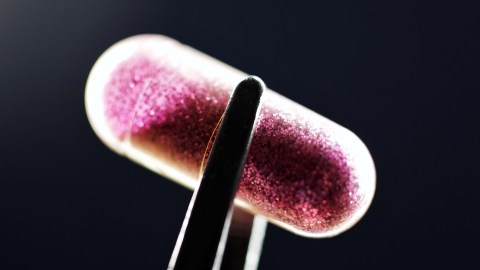Doctors who got free lunches from Big Pharma were more likely to prescribe opioids

Is a life worth a free meal? This might not exactly be the way the question is phrased in a research letter published in JAMA, yet that’s the underlying assumption you’re left with. After reviewing two years of data on prescription rates, it appears doctors were influenced by free meals offered by pharmaceutical companies to increase their opioid prescription rates.
The opioid epidemic has reached outstanding proportions. The crisis has gotten so bad that a group of drug executives was asked to appear at a May 8 hearing before the House Energy and Commerce Committee to discuss how so many addictive pain pills were sent to West Virginia and other states in recent years.
According to the transcript, more than 700 million hydrocodone and oxycodone pills were sent to West Virginia between 2007-2012—433 pills for every resident of the state, including children. One pharmacy in the tiny town of Kermit (population 400) received almost nine million opioids in a two-year period. During this period, 1,728 West Virginians fatally overdosed on opioids.
Another pharmacy in Mount Gay-Shamrock (1,779 residents) received 12.3 million doses between 2006-2014. The numbers are truly staggering:
An analysis by the committee found that Cardinal Health sent the pharmacy more than 6.5 million hydrocodone and oxycodone pills between 2008 and 2012. McKesson sent 5.8 million pills from 2006 to 2014. Other distributors also sold painkillers to the pharmacy, bringing the total to nearly 16.6 million by 2016.
The JAMA paper notes that 40 percent of opioid deaths are the result of prescriptions. Even for the deaths that occur due to black market fentanyl or heroin, prescriptions are more likely than not to have created the addiction. Using two U.S. databases, researchers analyzed opioid claims from the years 2014-2015 and compared them to the opioid-related marketing meals offered to doctors.
According to this data, increasing free meals led to an uptick in prescriptions. As the researchers note, their “findings establish an association, not cause and effect.” Maybe the pharmaceutical companies just happened to choose doctors more likely to prescribe to wine and dine. Maybe not.
As Clinton Lawson writes in the NY Times, overprescribing is not new. He points out that America experienced a similar problem in the 19th century with script-happy professionals pumping Americans full of opium. The nation has done a horrible job balancing overprescription and overcriminalizing, he writes, calling for politicians to better regulate the pharmaceutical industry and its ties to medical providers. That means holding prescribers accountable for their actions:
First, we must hold doctors accountable—with fines and possible jail sentences—for overprescribing habit-forming drugs in the interest of profits.
Lawson is not the only person thinking this way. Mike Moore, a Mississippi lawyer and former state attorney general who led the charge against Big Tobacco in the nineties (resulting in a $246 billion settlement), is now taking on Big Pharma. He believes pharmaceutical companies are intentionally fabricating statistics to doctors to sell a product:
When you train your workforce—thousands of salespeople—to go out and tell doctors that there’s less than a one percent chance of addiction if you take this drug, and you know that there’s no study that you’ve done, and no reliable study that anybody else has ever done that says that, then of course you’re telling a lie.
Last week six states announced a lawsuit against Purdue Pharma, the maker of Oxycontin, for similarly misleading doctors through bogus marketing claims. These include failing to disclose the risk of opioid addiction, claiming there is no “ceiling dose” on drugs, and stating that signs of addiction were really only indicators that patients need a higher dose.
Purdue settled with 26 states and the District of Columbia to the tune of $19.5 million in 2007 for downplaying addiction risks. At that time the company claimed no wrongdoing in its practices, which is the same statement it’s making today.
The JAMA letter concludes with the hopes that pharmaceutical companies will self-regulate:
Amidst national efforts to curb the overprescribing of opioids, our findings suggest that manufacturers should consider a voluntary decrease or complete cessation of marketing to physicians.
Given the industry’s track record, this is highly unlikely. The only way to force a change in policy will be to continue to hit these companies where they feel it most: the profit margin. Anything less will not help the public one bit.
—
Stay in touch with Derek on Facebook and Twitter.




